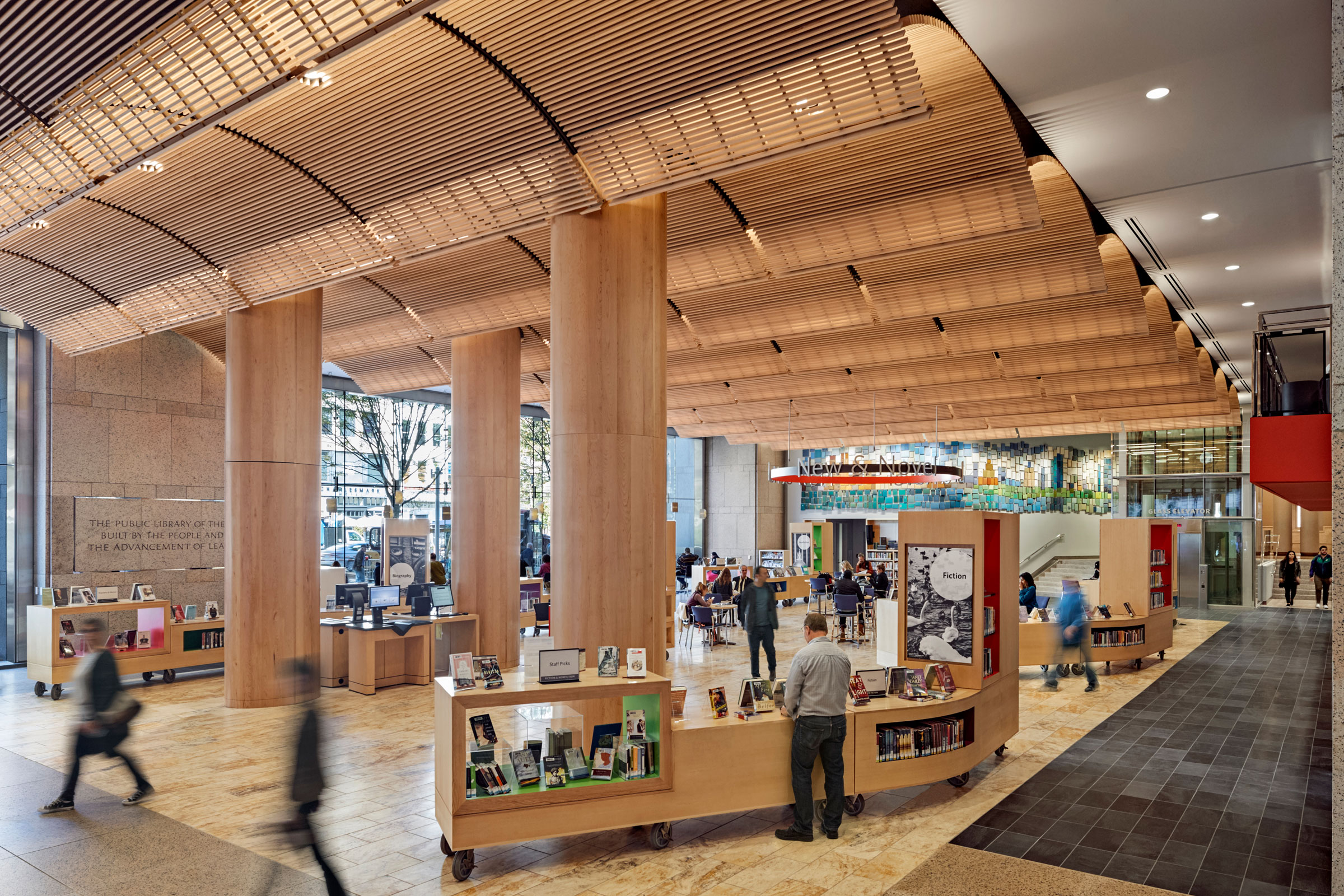Story at a glance:
- William Rawn Associates breathes new life into Boston Public Library.
- Architects raised the ceiling and replaced dark-tinted glass and stone walls with floor-to-ceiling windows
- Lights were replaced with LED fixtures, and a two-story space invites more balanced natural light in from multiple directions.
Bunker-like. That’s how people used to describe the 1970s inward-facing Johnson Building, an addition to the Boston Public Library (BPL), which itself dates back to 1895. But not anymore. The beautifully renovated second wing is flooded with natural light and packed with people who come together to read, study, or even just socialize.
The renovation by William Rawn Associates is a stunning example of what green libraries should be, as it connects a vital public building with the community just outside its doors. A light-filled space spills out into a new public plaza, complete with Wi-Fi and outdoor seating on one of Boston’s liveliest thoroughfares.
State-of-the-Art Amenities
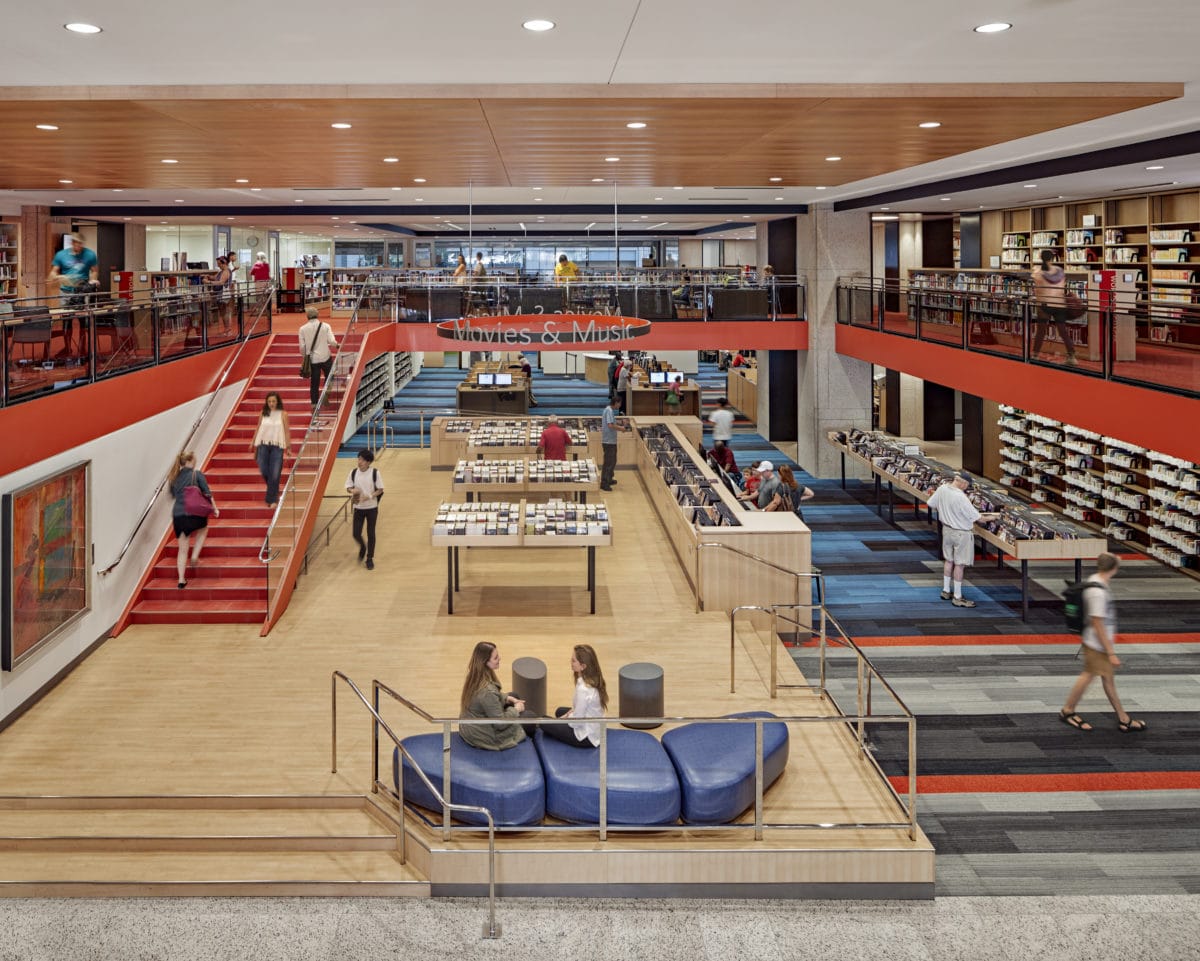
Photo by Robert Benson Photography
“This project creates a new civic idea for public libraries—with a heightened sense of being open, welcoming, and seamlessly connected to the city streets,” says Cliff Gayley, principal architect on the project.
There’s a state-of-the-art lecture hall, a business library and innovation center, a new children’s library and teen area, a high-tech community learning center, and more.
Gayley’s favorite feature, though, is Boylston Hall—or what he calls “the big urban room.” It’s a new idea for libraries, and one he hopes will continue to catch on. It’s the area with the newest books, an inviting cafe, and even a streetside broadcast studio from Boston’s public radio station, WGBH.
“It’s the place where the library and the city overlap, and where visitors are immediately surrounded by the library’s most active uses,” he says.
Opening Up the Library
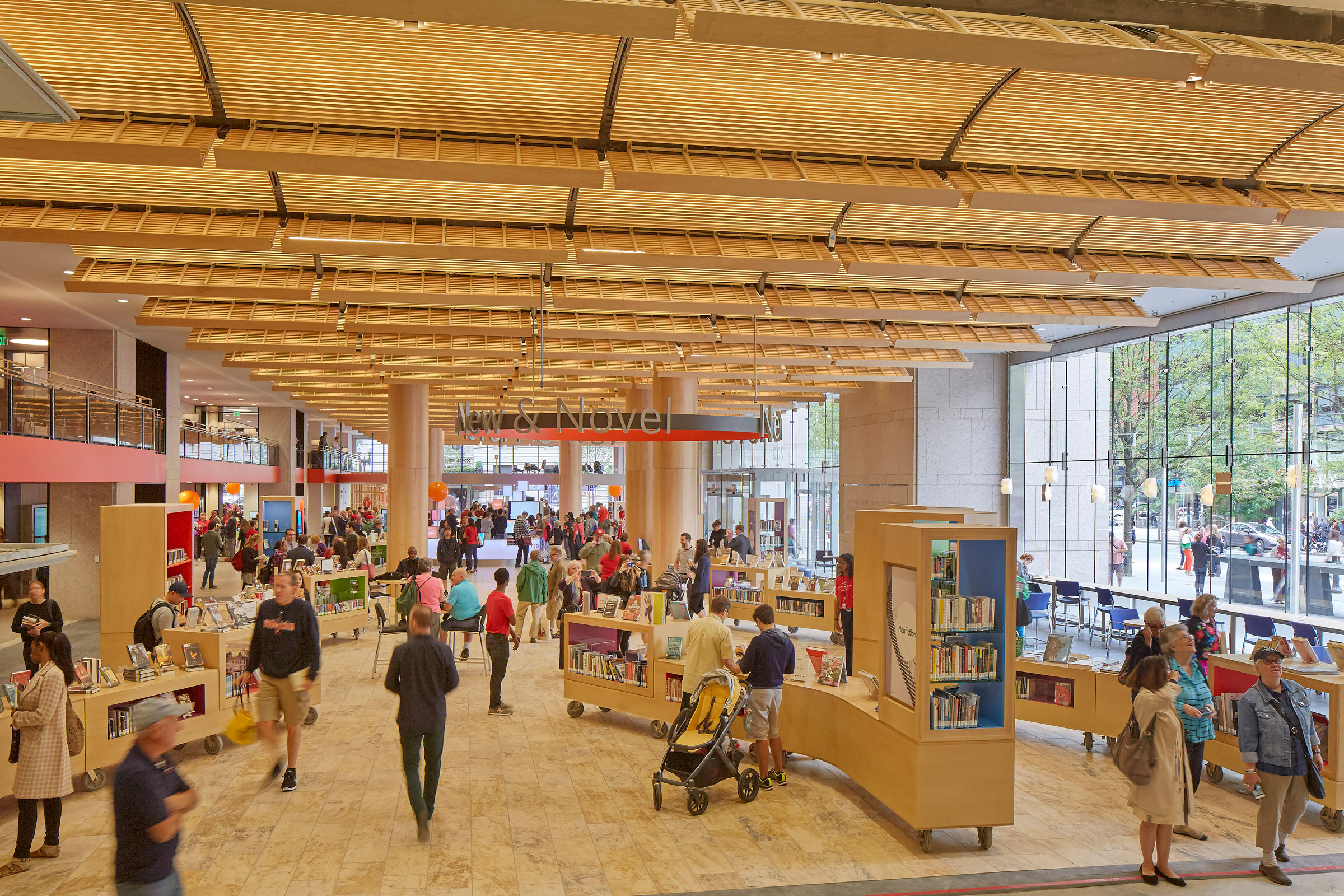
Photo courtesy of William Rawn Associates
Unlike many large libraries, the new Johnson Building goes to great lengths to connect the library to the city, Gayley says.
The project team put the most active library spaces along the street; used clear, low-iron glass to heighten transparency; created a front porch to bring the life of the library out onto the sidewalk with outdoor seats (and Wi-Fi), large trees, and charming catenary lighting overhead.
Inside, architects raised the ceiling and replaced dark-tinted glass and stone walls with floor-to-ceiling windows.
The library also boasts multiple entrances now—a departure from your average library with one front door. Physically opening the library to the city streets while following historic preservation guidelines was a challenge to say the least, but in the end, the project was quite the success.
Architects worked closely with the library and city every step of away, even reviewing the original architect’s notes about what could be done better.
“We read everything we could find about (Philip) Johnson’s work and from that developed a set of Johnson Principles,” Gayley says. “These principles included his ideas like the nine-square grid as well as procession and moment of arrival. We also found specific statements and criticisms Johnson made about his original building that we could address. These principles guided how we thought about transformation as we, the library, and the city worked closely with the Landmarks Commission and their staff to achieve fundamental change, while respecting the legibility and integrity of the original building.”
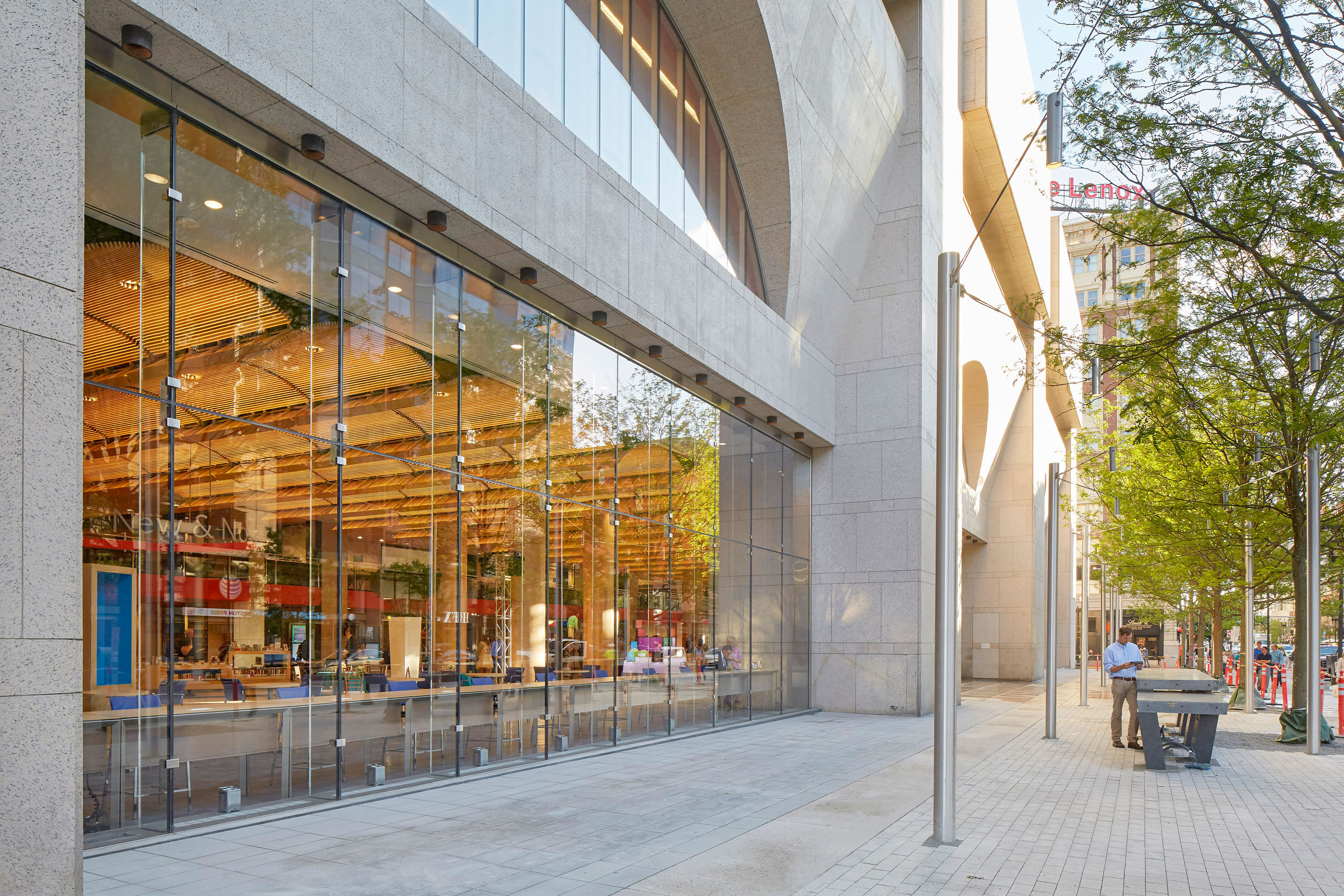
Photo courtesy of William Rawn Associates
They removed walls and mezzanine floor plates to create a single two-story space the length of Boylston Street and removed 10-foot tall granite barricades that blocked the library interior from the street. They essentially transformed the library sidewalk into the building’s front porch.
Increasing natural light was a huge goal for this project, especially as the original building suffered from poor and inconsistent daylight, with some spaces experiencing harsh glare from one side and other spaces receiving no daylight at all. Insulated ultra clear glass replaced the dark tinted single pane original glazing and also reduced the need for as many light fixtures. In other places, lights were replaced with LED fixtures to further efficiency, while removing dividing walls and making the two-story space invited more balanced natural light from multiple directions.
Green features abound, too. Low-flow plumbing fixtures were installed in new and existing toilet rooms, plus non-electric flushometers. The design included occupancy sensors and improved controls, and CAV (Constant Air Volume) boxes were replaced with VAV (Variable Air Volume) boxes to reduce energy and conditioned air usage. Unlike CAV systems, which supply a constant airflow at a variable temperature, VAV systems vary the airflow at a constant temperature.
In 2017 the renovation was recognized with the AIA/ALA Library Building Award, Boston Society of Landscape Architects Merit Award, Boston Preservation Alliance Achievement Award, and more.
Project Credits
Project name: Boston Public Library
Location: Boston
Cost: $78 million
Size: 156,000 square feet
Completion: July 2016
Architect: William Rawn Associations
Structural Enginer: LeMessurier Consultant
Civil Engineer: Nitsch Engineering
Landscape Architect: Reed Hilderbrand
MEP Engineer: Cosentini Associates
Interior Architect: LAB [3.2] Architecture
Lighting design: Lam Partners
Code Consultant: R.W. Sullivan Engineering
Sustainability Consultant: The Green Engineer
Newsfeed Cafe Architect: Darlow Christ Architects
Owner’s Project Manager: PMA Consultants
Construction Manager: Consigli Construction Co.
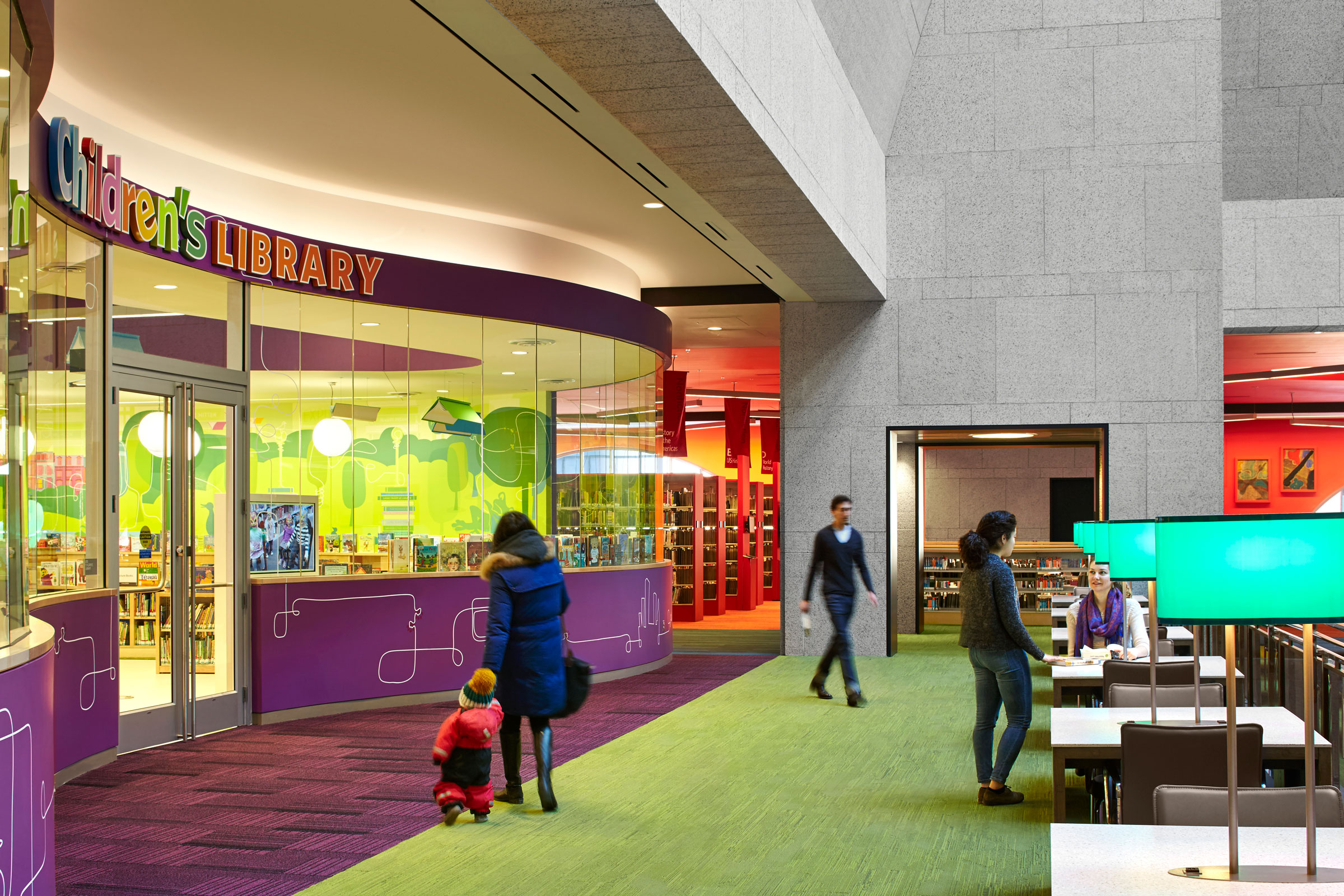
Photo courtesy of William Rawn Associates
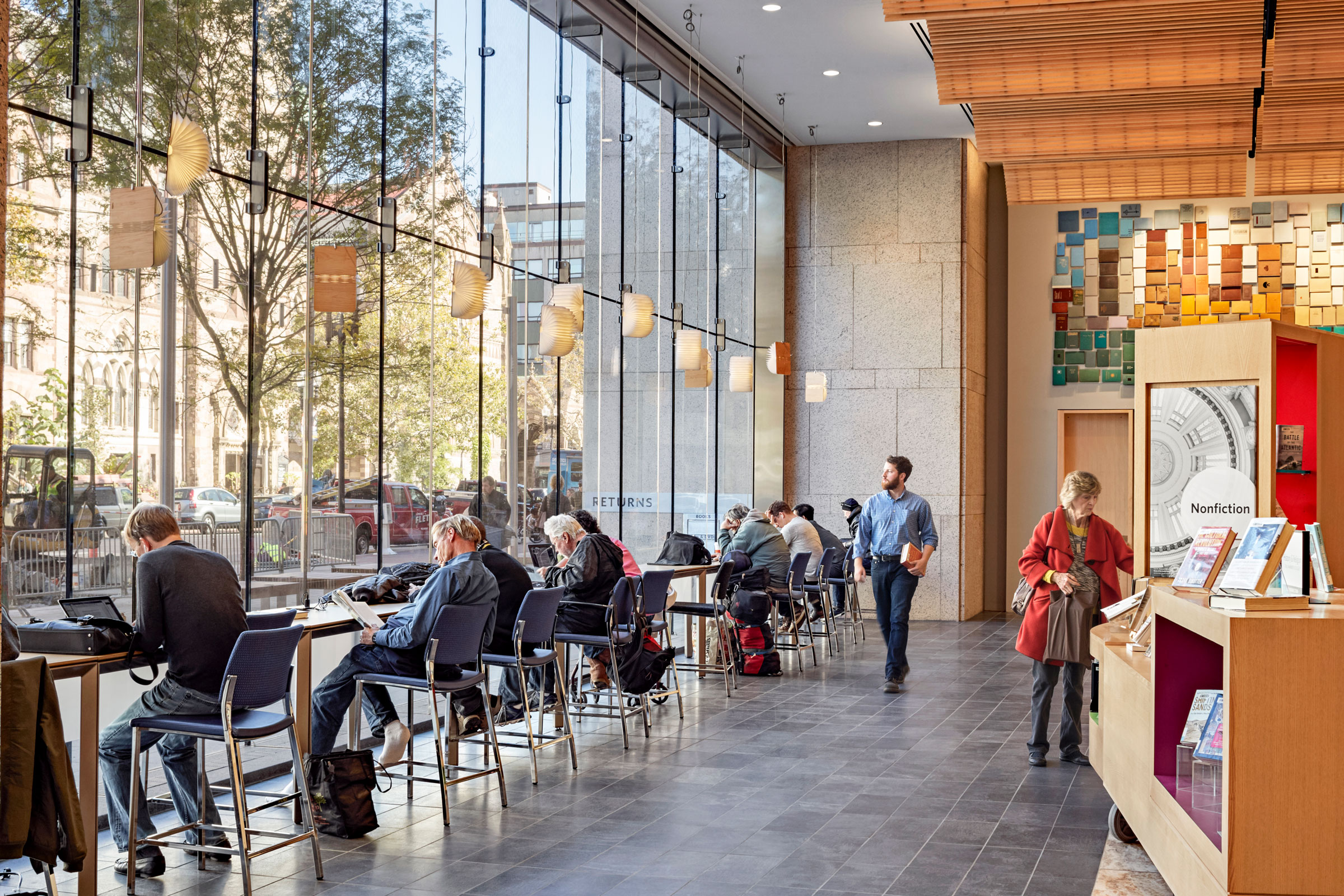
Photo courtesy of William Rawn Associates

